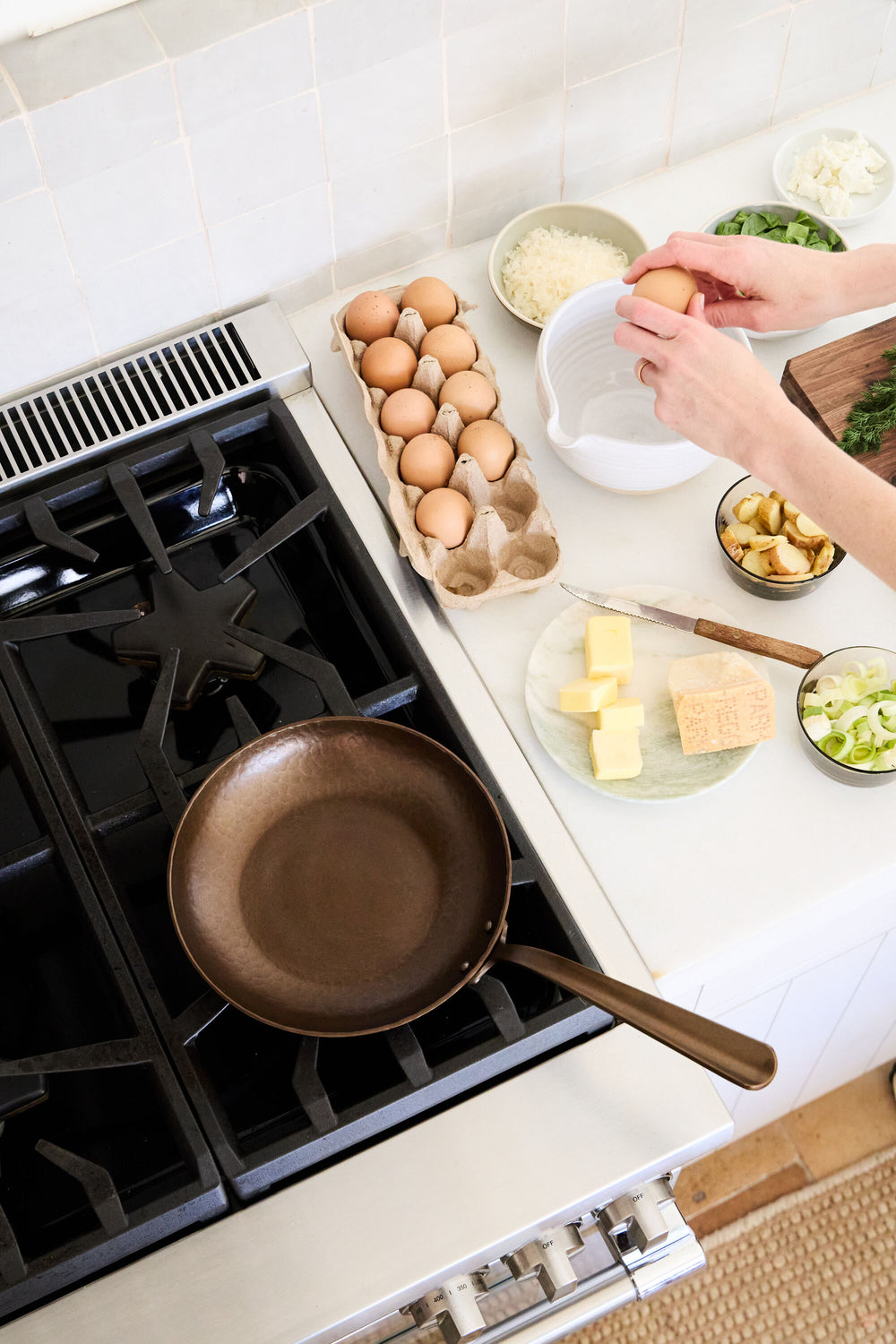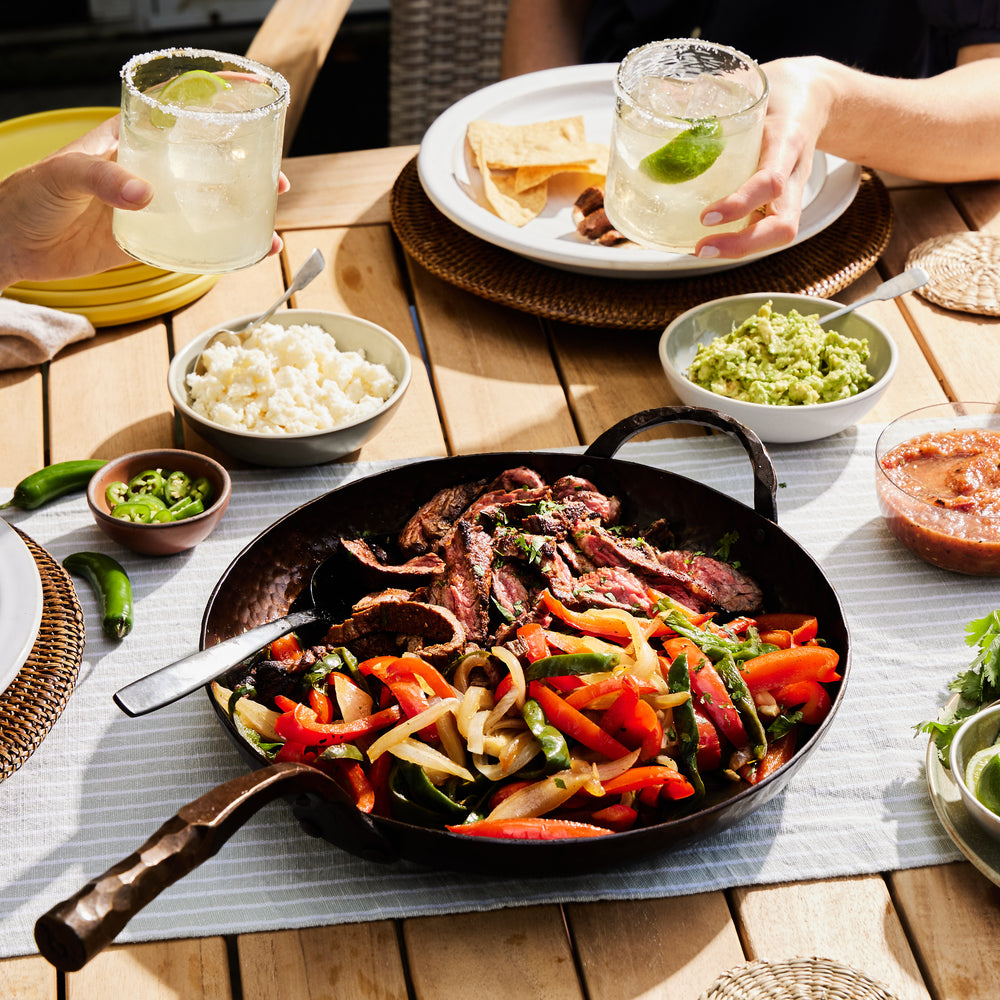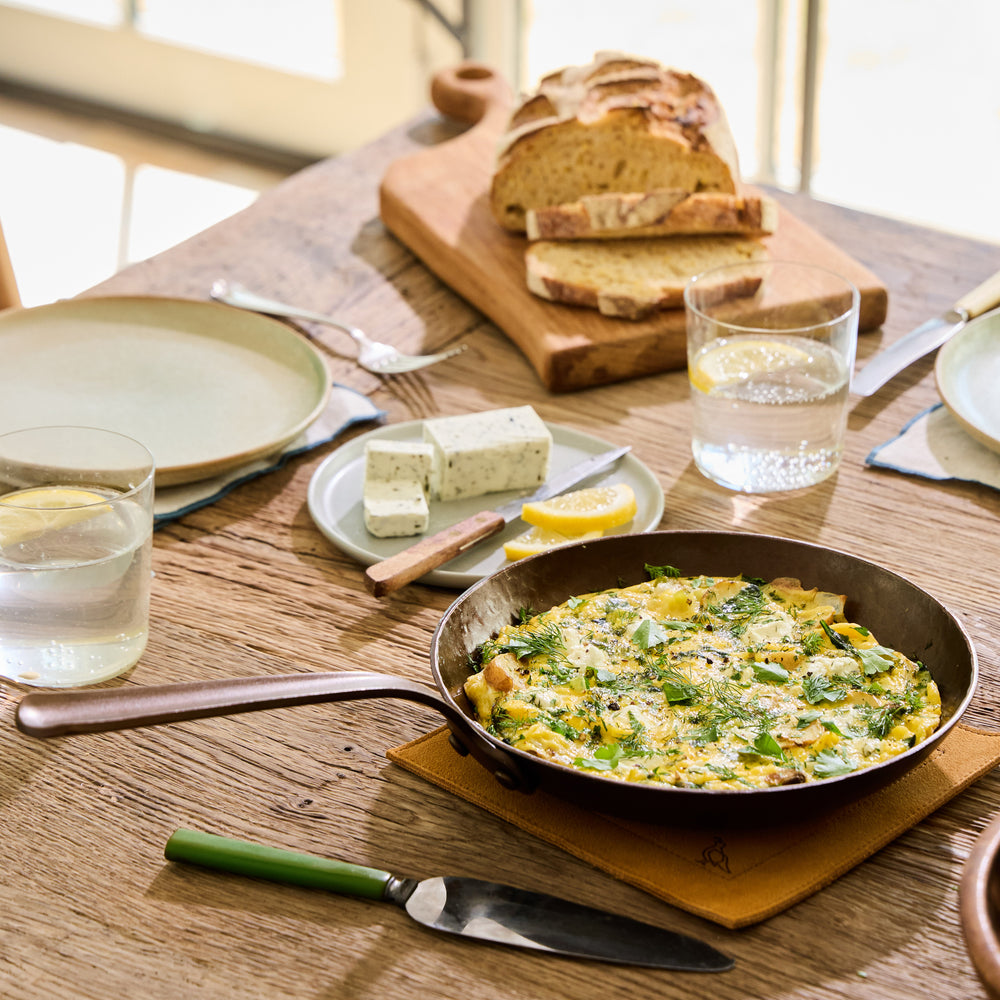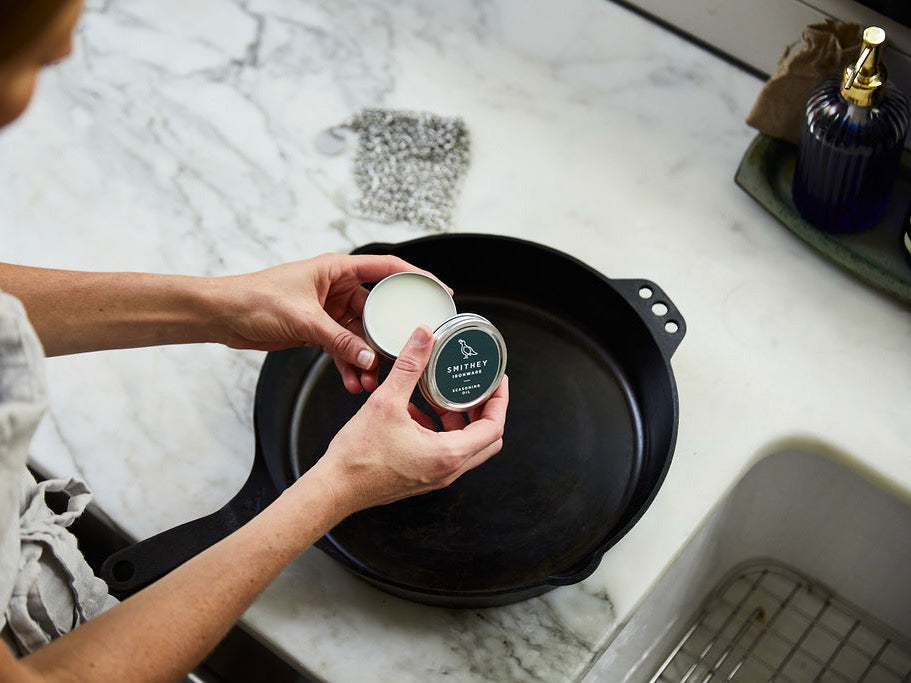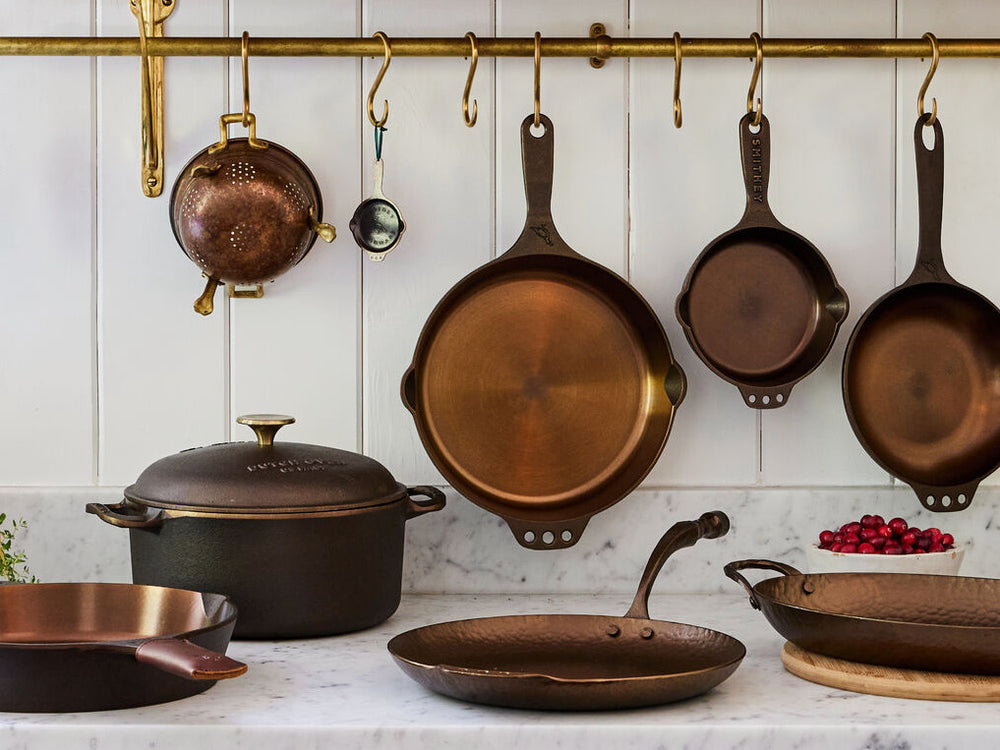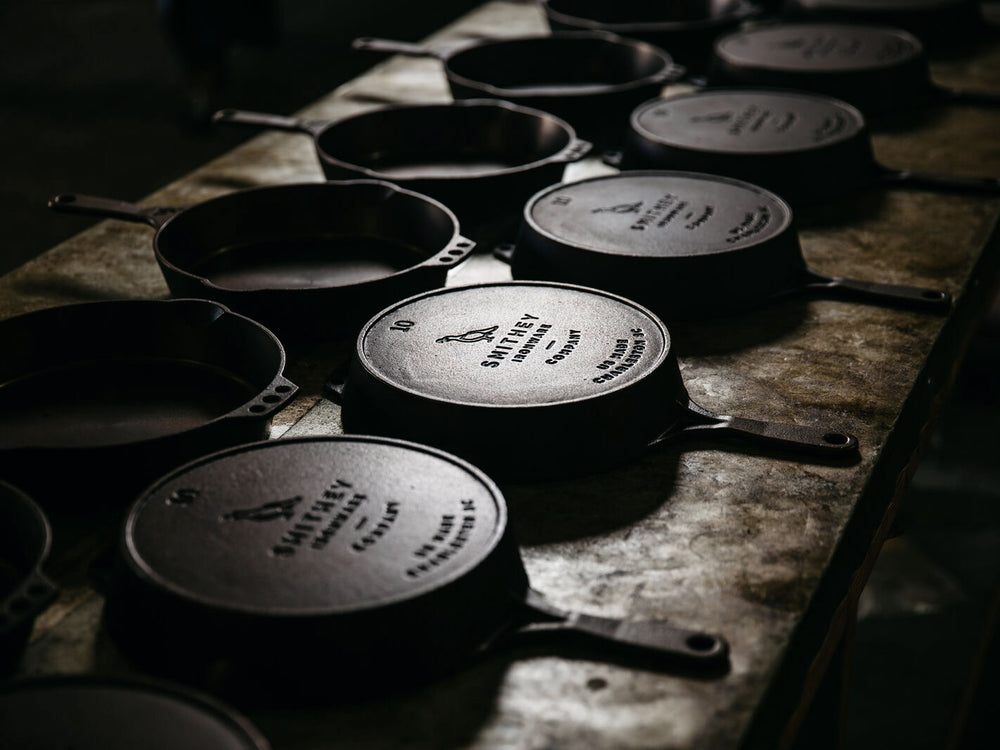Smooth Operator
There are few things in life more satisfying than watching a perfectly cooked egg slide around in your cast iron skillet. Watching that over-easy egg release from the pan and onto your plate with a runny yolk intact makes us do a *chef’s kiss* every time. There’s a reason this excites us – it’s because there’s a voice in our head telling us that this should be hard, that cast iron should be rough, that food should stick, and that only through a hundred years of grandma’s cooking and 57 coats of seasoning can we hope to achieve the type of cast iron surface that will allow our eggs (or bacon, or veggies, or fish) the freedom to slide around. At Smithey, we’re challenging that notion by producing cast iron with a satin smooth interior finish that is naturally non-stick and pleasing to use right out of the box. Creating this smooth surface takes time and precision, but we think you’ll agree that the result is worth it.
Now you may be wondering, if smooth cast iron is better, why isn’t all cast iron cookware smooth?
Good question! Most cast iron cookware starts out ‘rough’ due to the production process. A casting is formed when molten iron is poured into a sand mold. Once the iron has cooled, the mold is broken away and what remains is a raw casting with the grainy surface texture of the sand. While there are variations in the iron formulations and the types of sand used to make the mold the basic method of casting iron has remained remarkably similar over hundreds of years.
What has changed over time is the approach to smoothness. The great American cast iron brands of the past recognized the importance of a smooth interior surface and cast iron skillets produced by companies like Griswold and Wagner in the late 19th century were polished through a variety of labor-intensive methods that added significantly to the expense of the finished product. Things changed following WWII when someone had the (surprising) idea to try spraying cookware with a new chemical coating that had been invented as a jet engine lubricant. Teflon coated pans were a new, shiny, inexpensive alternative to the well-seasoned cast iron skillet, and to compete with this new non-stick industry cast iron companies began to drop the polishing step that took so much time and money. Since then, many of these companies have kept with the status quo by continuing to skip this step in production.

Which brings us back to Smithey. Our company was born from a desire to recapture the lost magic of the iconic polished American cast iron companies of the past, and to introduce new generations to the joy of cooking on smooth cast iron surfaces. Our manufacturing process honors this past while harnessing modern technologies to create smooth cast iron pans featuring even surfaces for consistent heat transfer. Every Smithey arrives at your door with (multiple) layers of seasoning already applied, but unlike rough cast iron which relies on that seasoning to prevent food from sticking, our seasoning acts more like a coat of paint on your house protecting it from the elements. Take a look at a Smithey in person and you’ll notice the difference a smooth interior makes – our interiors glow with the rich promise of thousands of meals to come.
Ultimately, when it comes to cast iron, smoother is better. Here’s to many more perfect fried eggs!
 Skip to content
Skip to content
